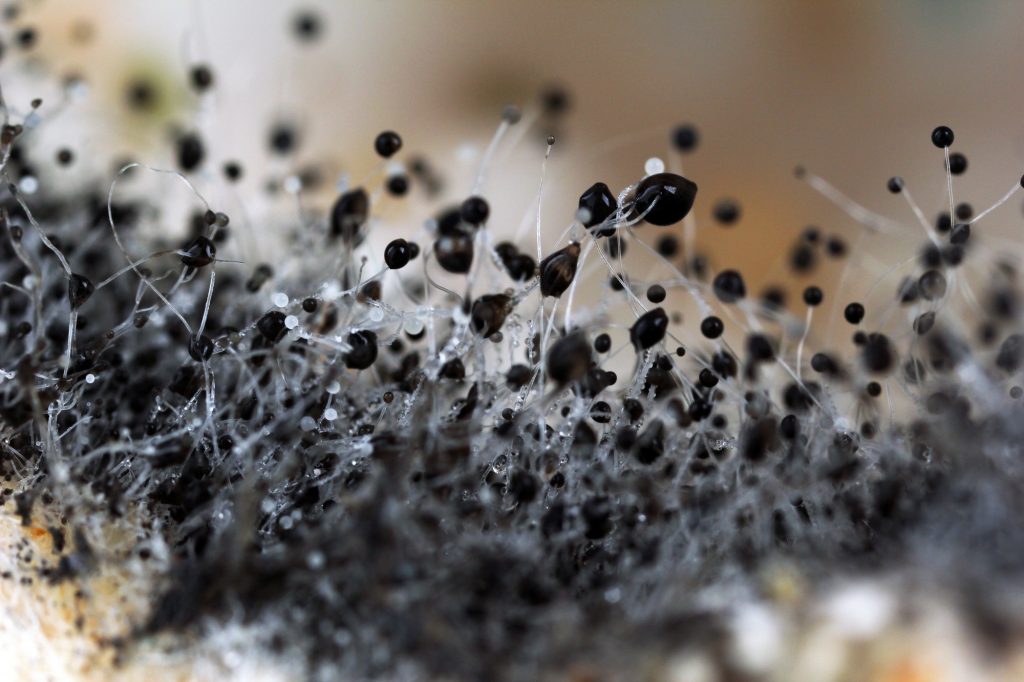
Of all the toxic substances that may lead to cancer, mold is one of the sneakiest and, unfortunately, also one of the most insidious. If you are just learning about the “silent sickness” that mycotoxin exposure can cause, this brief primer will get you started.
In addition, be sure to tune in to the “Know the Cause” internet show with Doug Kaufman on December 11th, when I will go more in-depth into this critical subject for your Healthy Breast journey!
Mold Toxins 101
While even mainstream organizations recognize the risk of lung cancer with mold exposure, in truth that is just the tip of the iceberg. Studies

have also connected long-term mold exposure to liver, urinary tract, and kidney cancer as well as bladder and thyroid cancer anecdotally.
Over time, mold exposure can seriously wear the body down and lead to other documented conditions such as brain swellings, Multiple Sclerosis, digestive issues, heart problems, fibromyalgia, and autoimmune disease, all risk factors for breast cancer. A large number of individuals exposed to mold may first display neurological complications such as brain fog, anxiety depression, memory loss, and neuropathy. In some studies, the percentage has been as high as 70%.
The real threat behind mold lies in mycotoxins, which are the waste products that certain kinds of fungi produce. There are literally dozens of different kinds of mycotoxins that could pose a threat to human health and they can be found in everything from foodstuffs to building materials. Here are a few of the most common:
#1 Aflatoxin. The National Cancer Institute has connected exposure to this highly dangerous mycotoxin to a high risk of liver cancer. Aflatoxin is found mostly in corn and tree nuts, especially peanuts.
#2 Trichothecenes or “Black Mold.” Trichothecenes is the waste product of the Stachybotrys fungus, otherwise known as “black mold.” Trichothecenes exposure can lead to extreme brain fog, fatigue, joint pain, lethargy, and autoimmune conditions. Some experts say that up to 40 percent of schools and 25 of homes in the US have some kind of toxic mold infestation, and Stachybotrys is usually the culprit.
#3 Ochratoxin A (OTA). Ochratoxin A is found primarily in coffee beans, which is why it is always a good idea to make sure that you are getting your beans from a source that tests its products for mold, especially if you practice coffee enemas for health. A 2007 French study found a connection between OTA and urinary tract tumors.
#4 Fumosinis. Fumonisins are produced in corn and especially in corn-based animal feeds. Rat studies have connected high levels of these mycotoxins to kidney and liver tumors in both men and women.
#5 Zearalenone (ZEA). This mycotoxin is connected to the famous “Jersey Girls” study. Over 30 years ago, researchers found that ZEA is a “mycoestrogen,” a mold-produced xenoestrogen linked to hormonal imbalance and breast cancer. A form of ZEA called Zeranol is still given to commercial U.S. livestock although it is banned in most of the rest of the world.
What You Can Do
Molds and the mycotoxins they produce have been around for as long as there has been vegetation and healthy soil; they are an important part of the natural cycle of decay and without them, the earth would be a barren place indeed. They pose a threat to human health, however, because of irresponsible agricultural practices and, in the case of mold at home, work, and school, irresponsible and antiquated building practices.
Nowadays, the threat of mycotoxins is simply a part of life, but you CAN take action to not let it affect you! Avoiding grains, commercial meats and other sources of mold contamination in your diet and sticking to all-organic, non-GMO foods when you shop is paramount. Getting your house and office space checked for black mold regularly is a must-do as well. Finally, pay attention to the warning signs within your own body. There are many detoxifying substances such as Matcha green tea which can help purge your body of mold toxins if you feel you have already been exposed.
My mom was diagnosed with breast cancer in March of this year. She just had her forth chemo treatment. What I am wondering is, a church she attends has a bad mold problem that they are making plans to fix it but not until the summer of 2019. How much at risk is she going there. She goes to that church twice a month for about an hour each time. Some people who attend there complain about it being difficult to breath while they are there. Should she not be attending that church while she is receiving chemo or is it okay for her to be there? Thank You! 🙂
Hi Vicki ~ I suggest she talk this through with her healthcare practitioner and the impact this may have on her immune system while undergoing treatment.